What proofreading tips do the best writers rely on?
Here’s one: they hire professional proofreaders to help with long-form works. But what else should you know? If you write a lot, read through your work aloud and mark up every missing punctuation mark and capital letter with a red pen.
Practical proofreading tips like these will help you learn how to find and fix common errors in your writing. The proofreading process is easy when you know how!
Let’s cover some more.
We tested dozens of grammar checkers, and Grammarly is the best tool on the market today. It'll help you write and edit your work much faster. Grammarly provides a powerful AI writing assistant and plagiarism checker.
Contents
- 1. Start the Next Day
- 2. Read Your Work Aloud
- 3. Note Common Grammar Errors
- 4. Keep A Style Guide Handy
- 5. Print a Hard Copy
- 6. Change the Formatting
- 7. Use a Good Spellchecker
- 8. Ask for Help
- 9. Know Your Homonyms
- 10. Expect to Find the Error Again
- 11. Go Slowly
- 12. Give Attention to Fact-Checking
- 13. Make Every Word Count
- 14. Keep the Thesaurus Handy
- 15. Check for Excessive Adverbs
- 16. Shorten Your Sentences
- 10 Top Proofreading Tools
- Proofreading Tips: The Final Word
- Proofreading Tips FAQs
1. Start the Next Day
Sleeping on your piece will help you look at a piece of writing with fresh eyes. If you are not on a tight deadline, wait to proofread until the next day. If you have a tight deadline, wait a few hours to take a second look.
Waiting a bit between finishing the piece and proofreading will help you approach more objectively. When you proofread right after writing, your mind may automatically see the correct spelling or punctuation rather than the error you typed. When you wait, the errors jump out at you.
2. Read Your Work Aloud
Reading your written work aloud will help you hear and see errors you might skim over by reading silently. Reading out loud forces your eyes to see every word. Reading orally also forces your mind to engage with each word.
Not only does reading out loud help you catch errors, but doing so will also help you find the wordiness of problems with flow. Reading aloud improves your style and word choice and your grammar, spelling, and punctuation.
3. Note Common Grammar Errors
Most writers have common errors they make. Yours might be problems with commas. You might find that you struggle with passive voice. Perhaps common contractions like “its” and “it’s” throw you off. The more proofreading you do, the more common errors in your own writing you will notice.
To help you avoid these errors in the future, make a list. Then, when you are proofreading, check that list. If you hire a proofreader, give them your list. You might also find our guide on the best proofreading software options helpful.
4. Keep A Style Guide Handy
If your writing has a style guide you’re supposed to use, have the document on hand while you write and proofread. Refer to the guide regularly. This will help you make sure your formatting, capitalization, spelling, and punctuation remain in line with what the guide dictates.
5. Print a Hard Copy
If your document is not too long, consider printing a hard copy for proofreading. While you can proofread on the computer screen, a printed copy helps you catch more errors. Having the writing on a piece of paper will also let you record errors in ink. Use a red pen so you can more easily see problems to fix.
6. Change the Formatting
Sometimes, changing the formatting of your piece helps errors jump out at you. People tend to get used to double-spaced, single-column writing, especially on a computer screen. Change the size of the layout, making the page smaller or larger, or increase the font size. By doing so, your eyes will start reading the entire line of writing so you can catch punctuation, spacing, and spelling errors more carefully.
7. Use a Good Spellchecker
While a spellchecker is no substitute for proofreading, these tools give quite a bit of help. They will catch your most common spelling errors. Some even check for grammatical errors, punctuation, and spacing. Sometimes seeing an extra space is challenging, but a good spellchecker with a grammar check function will catch this error.
8. Ask for Help
A second pair of eyes can be invaluable when proofreading. Sometimes reading your own work objectively is difficult. Ask a friend who is skilled in grammar and spelling to take a look too. Sharing drafts with others will help you finalize your word choice and polish the piece, so the work really shines.
9. Know Your Homonyms
Homonyms sound the same but have different spellings and meanings and can trip up even the best writers. Some of the most common spelling errors are not errors but rather mixed up homonyms.
Keep a list of homonyms you regularly use and double-check your draft for each one. You do not want to switch which for which because the meaning of your sentence changes drastically.
10. Expect to Find the Error Again
If you find an error in your writing somewhere, such as a run-on sentence, you should assume that the error will show again elsewhere in the piece. Be overly considerate to find each one. If the error is a misused homonym or misspelled word, enter the word or phrase into the search feature to check the entire document for the misspelling or misused word.
11. Go Slowly
Don’t rush proofreading. Set aside a chunk of time for this task. Read each sentence slowly to help you find errors in word choice as well as grammatical errors. Then, reread the sentence.
12. Give Attention to Fact-Checking
While most of your job when proofreading will be checking for spelling errors, grammatical errors, and readability, you also need to spend some time fact-checking. Do all of the words in your piece make sense, and are they all accurate?
13. Make Every Word Count
Do you fall victim to wordiness? Does your writing have words that make the piece weaker? Edit out the fluff and wordiness to make your writing more succinct. This part of the editing process works to make your writing stronger.
14. Keep the Thesaurus Handy
Do you find that you use certain words too often? If you see words used repeatedly in your piece, grab the thesaurus. Are there alternate words you can use without changing the meaning? During the proofreading stage, make these changes so your writing is more interesting and engaging to the reader.
15. Check for Excessive Adverbs
Adverbs are helpful in small doses, but too many adverbs make your writing weak. Carefully read your work and see how many adverbs you have. Look for words that end in -ly. For every adverb you see, ask yourself if the sentence needs the word or if the meaning stays the same if you remove the word.
16. Shorten Your Sentences
If possible, keep sentences to 15 words or less. Some writing requires longer sentences, but be judicious with the delete button. If you can say something more succinctly, do so.
Proofreading is a critical skill if you will become a good writer. When you can identify and correct any errors in your writing, you make your works stronger. Brush up on your proofreading, and get help with longer written works.
10 Top Proofreading Tools
Proofreading is the final check before finishing a piece of content. During a proofread, make changes like fix misspelling, punctuation, and grammar.
Online proofreading tools and services can help with this final step. They should correct common grammatical errors and improve the overall structure of your text.
Now, let’s cover each one of the most popular tools.
1. Hemingway App
Hemingway App helps with editing content, and improving reading ease can help you improve sentence structure and grammar. It will also help you eliminate run-on sentences and improve your word choice. It’s free and works online. You can buy a paid version and use it locally.

2. Grammarly
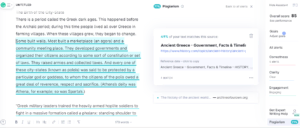
Grammarly is a popular proofreading tool that many writers depend on. You can use it to find and fix errors in your own writing fast.
It will fix common errors like incorrect capitalization, spacing, run-on sentences, and more.
You can also use Grammarly as a type of fact-checker. Basically, paste your work into it, and run a plagiarism report. It will unearth instances online of a similar quote or statistic in use. You can then properly cite your own work.
Read our Grammarly review.
3. Ginger
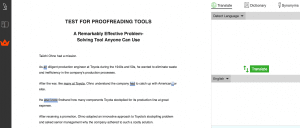
Ginger is a popular free and paid alternative to Grammarly. Although it lacks some key features like a dedicated style guide, it’s relatively accurate, and you can try a free version. The interface is also a lot like Grammarly’s, but it’s a bit cheaper.
4. ProWritingAid

ProWritingAid is similar to Grammarly, except it’s a little cheaper and available for an annual rather than monthly subscription. It also works directly with Word doc and Scrivener files.
You can use ProWritingAid to fix instances of the passive voice, run-on sentences, and basic fact-checking via their plagiarism report. This tool will also help improve your word-choice based on your preferred style.
Read our ProWritingAid review.
5. Whitesmoke
Whitesmoke is a comparable paid alternative to ProWritingAid. Use it to check articles for spelling and grammar mistakes, punctuation mistakes, and more.
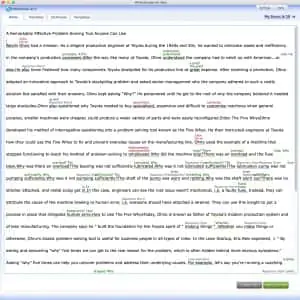
It’s also ideal for writers and non-English speakers on a tight budget. And it identifies errors in sentence structure. However, the user-interface is more dated. It comes with varying price points.
(Unsure about how these tools compare? Please read our review of ProWritingAid vs. Whitesmoke vs. Grammarly vs. Ginger)
6. Easy Word Count
Easy Word Count is a good choice for bloggers and content writers who want a free, online proofreading tool. You can track the amount of work you are creating then proofread and edit every 100-150 words. Your final proofread will be a lot less time consuming as a result.
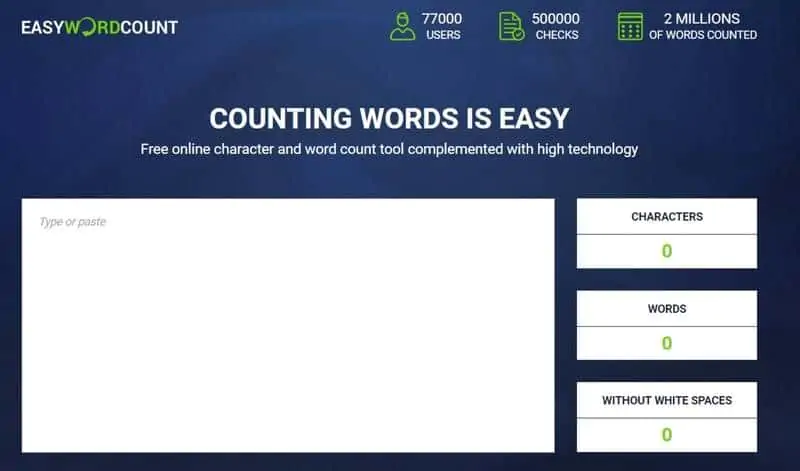
7. NewNovelist
NewNovelist is ideal for aspiring creative writers, especially those interested in writing books and novels for the first time.
Not only does it boast a vast range of organizational tools that helps you stay on top of things, but the features will also provide writing advice and insights that help you stay productive, motivated, and inspired.
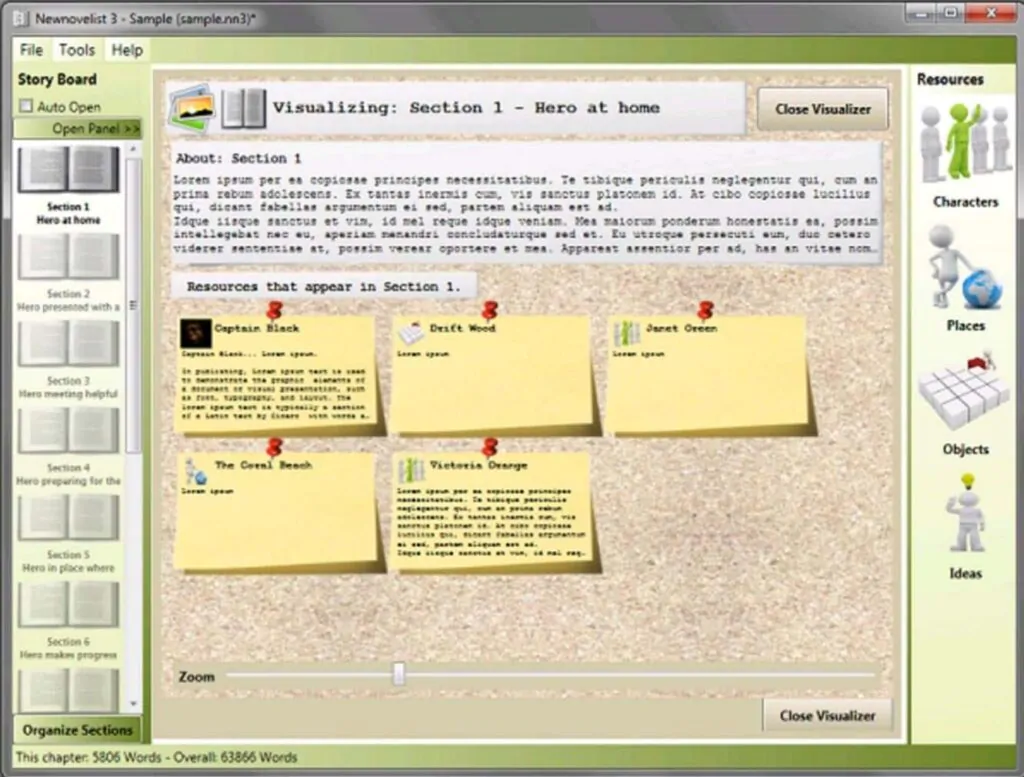
8. Academized
Academized gives experienced and aspiring writers the chance to send off their work to others from all writing fields. It focuses mostly on students and those engaged in academic writing.
Those professional and experienced writers aim to provide expert feedback and advice that can help you improve your writing standards and the quality of your content.

9. Draftback
Draftback is a Google Chrome extension. This free tool allows you to play through previous revisions you have made to your content. This option is handy for editing purposes because it allows you to correct your text with minimal effort.
The extension lets you know how many times you have revised a certain piece, making sharing your work easier after it has been completed!
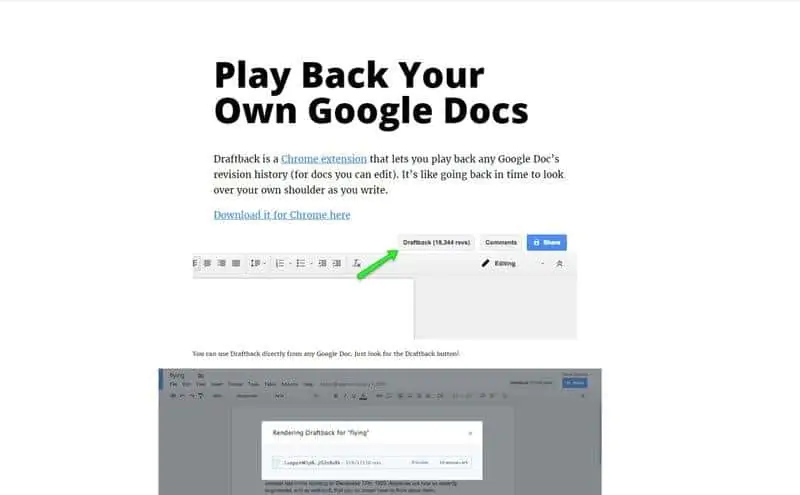
10. Copyscape
Copyscape is useful if you work with other writers. Why?
Plagiarism is becoming more pervasive every day, so checking your writing using one of these online tools is crucial. Both allow you to scan your writing into different formats such as PDF, DOC, TXT, etc.
The services then search the internet to check and provide you with a list of websites with content similar to yours so you can make edits. Also, a plagiarism rate shows the originality of your work.

Proofreading Tips: The Final Word
As you can see, the editing and proofreading stages of your creative writing process don’t have to be overly time-consuming and tedious. Using these proofreading tips and tools, you can focus on the writing that matters and produce your best work. Want more? Check out this list of writing apps.
Author’s bio: This post was co-written by Nicole H and Brenda. Nicole has been writing professionally since 2006. She loves the nuances of the English language and using it to craft interesting writing for her audiences. Brenda believes constant learning is the only way to success. You can visit her personal blog at Letsgoandlearn.com
We tested dozens of grammar checkers, and Grammarly is the best tool on the market today. It'll help you write and edit your work much faster. Grammarly provides a powerful AI writing assistant and plagiarism checker.
Proofreading Tips FAQs
How can I improve my proofreading skills?
Practice! Print out your own work using double space and in the Courier or Courier Prime font. Read your work aloud, in quiet room, away from colleagues and other distractions. Mark up errors with a red pen. Use dedicated proofing software to find and fix errors that a typical spellchecker misses. Hire a proofreader for longer pieces of work. It’s also a good idea to keep track of your common mistakes and issues.
How can I proofread a document quickly?
Use dedicated software. Copy your writing or draft and paste it into a dedicated proofreading tool like Grammarly. Firstly, the font and spacing will change so you can visually identify errors more easily. Secondly, these tools will scan your document for errors and suggest potential fixes. Check your document two or three times for spelling, grammar and punctuation errors.
How can I get proofreading online?
You can get proofreading online by using popular software like Grammarly or ProWritingAid. Both of these tools work in the browser and offer a free trial to test. All you need is something to check and an internet connection.
